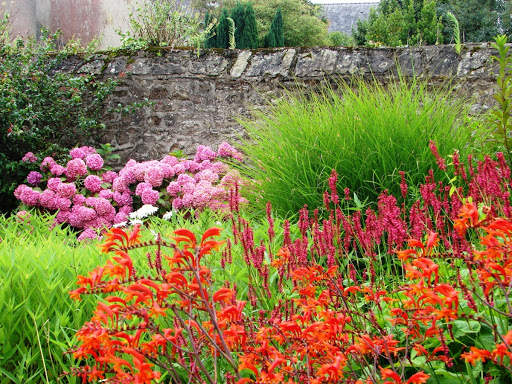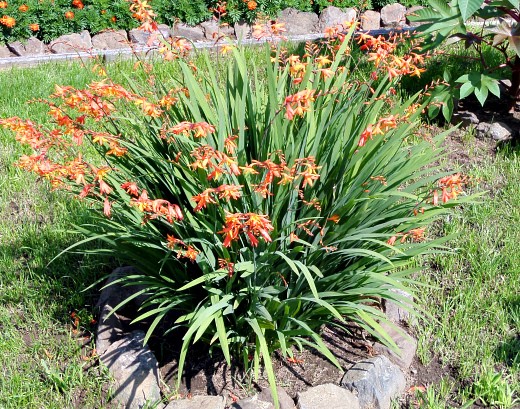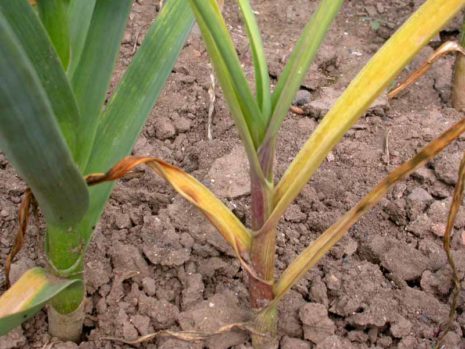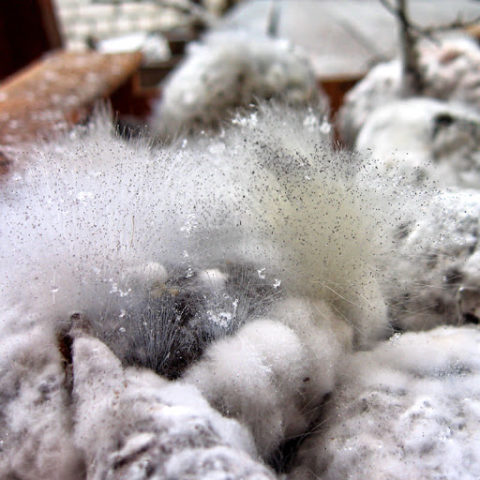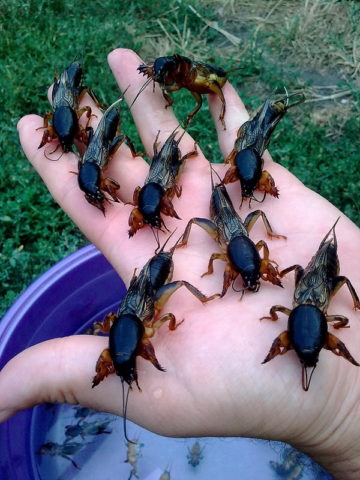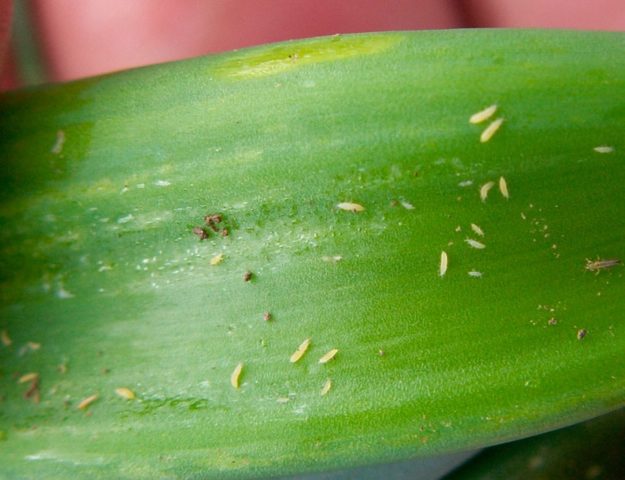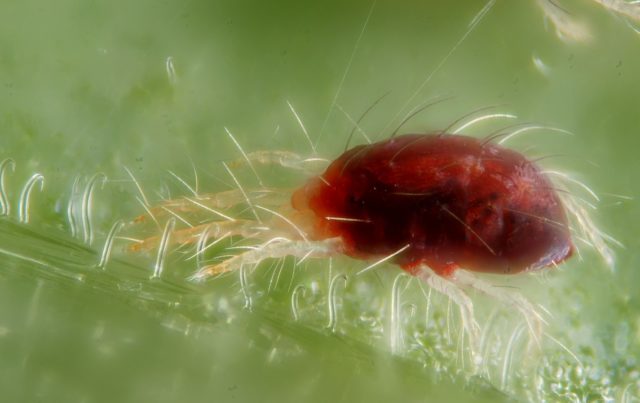Content
Planting and caring for perennial crocosmia has some peculiarities: it is regular watering and top dressing 4–5 times per season. In care it resembles gladioli: it is a demanding plant. But she gives very beautiful, bright flowers that appear in the second half of summer and delight until autumn. Despite the labor costs, many growers strive to breed crocosmia on their site.
Description of perennial crocosmia
Crocosmia (montbrecia) is a genus of perennial plants belonging to the Iris family. The original name was given in honor of the French explorer Antoine de Montbre. The word "crocosmia" (Latin Crocosmia) is used more often. Also common is the common name "Japanese gladiolus".
The plant really resembles a gladiolus, but it is small in size, so it looks more graceful. Crocosmia (like other iris) grows from reticulated corms. It produces large xiphoid leaves, the height of which reaches 50-60 cm. 4 peduncles and one stem with a large number of branches emerge from the bulb. It is quite thick, fleshy, strong. It can reach a height of 80–100 cm.
In the description of crocosmia (pictured), it is indicated that its flowers are bright orange, red or yellow in color. Flowering lasts a very long time - from the first decade of July to the beginning of September. The peculiarity of the culture is that the buds begin to bloom not simultaneously, but gradually. Therefore, the bush remains decorative for 2–2.5 months.
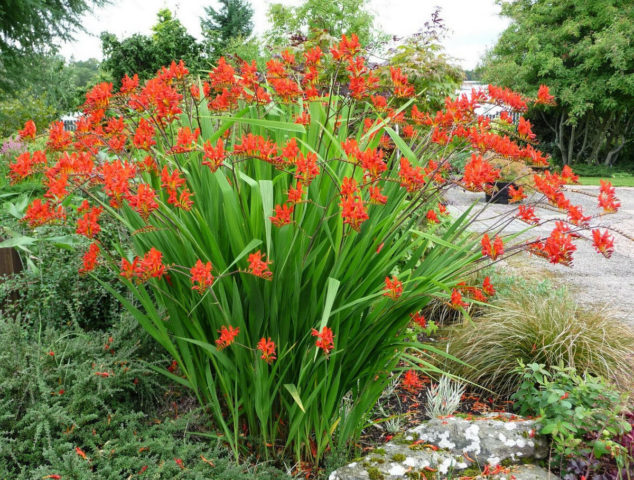
Perennial crocosmia looks especially beautiful due to the dense planting of several bulbs
Flowers not only decorate the garden, but also give a pleasant smell. If you get closer, you might think that it is a saffron scent. Gardeners note that the smell remains even after the perennial flower dries.
Types and varieties
In nature, there are more than 40 types of crocosmia. They all grow in the tropical zone of South Africa. The breeders managed to breed more than a dozen cultivars that are suitable for growing in the climatic conditions of Russia. The most popular varieties of perennial crocosmia with a photo of flowers in the garden will help you choose the right variety for decorating the landscape.
Crocosmia ordinary
Crocosmia crocosmiiflora belongs to the hybrids bred at the end of the 19th century. Tall shrub (up to 80-100 cm), with branched shoots. The flowers are small, up to 3 cm in diameter, bright: orange and yellow.
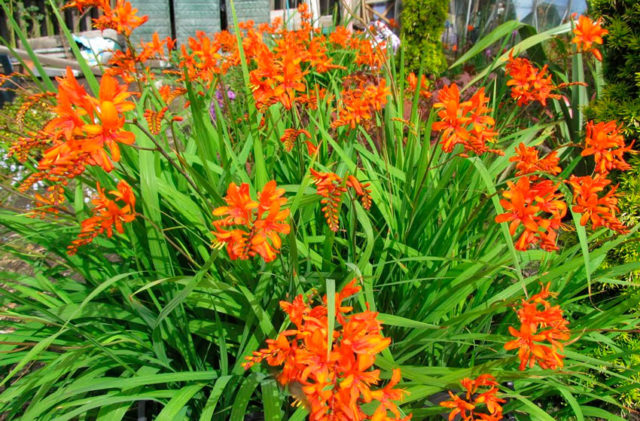
Bright flowers of Crocosmia vulgaris are visible from anywhere in the garden
Crocosmia Paniculata
A perennial variety Crocosmia paniculata forms the tallest bushes (up to 150 cm). Blooms already in mid-June, which is not typical for other varieties. The flowers are small, bright orange in color, gather in panicle inflorescences.
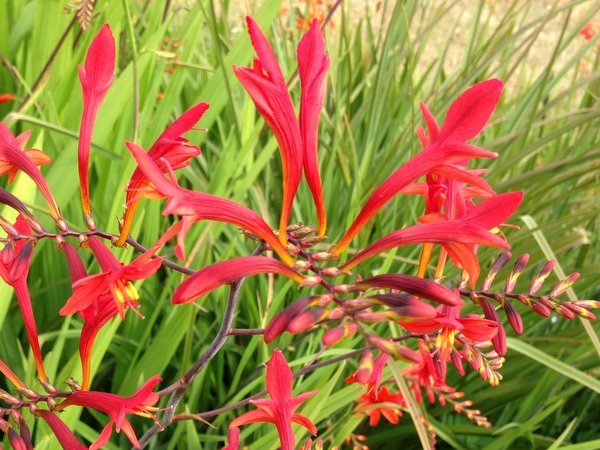
The diameter of the flowers in the Paniculata variety is 2-3 cm
Crocosmia golden
Crocosmia aurea is a medium-sized plant (60–80 cm), producing several xiphoid leaves emerging from a common point of growth (rosette) at the base of the plant. The color of the flowers of the perennial culture is yellow, golden.
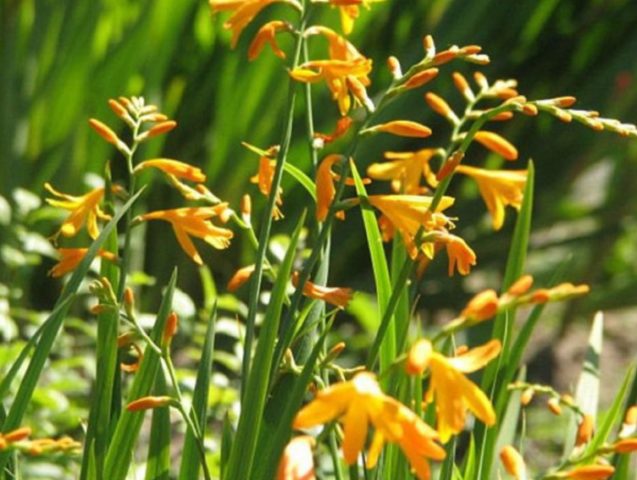
The peculiarity of golden crocosmia is late flowering, which begins in the last decade of August
Crocosmia Potts
Crocosmia Pottsii prefers abundant moisture, as it grows naturally in swampy soils. It can grow both in an open area and in semi-shady places. The color of the flowers is pastel pink. This variety will appeal to lovers of calm shades.
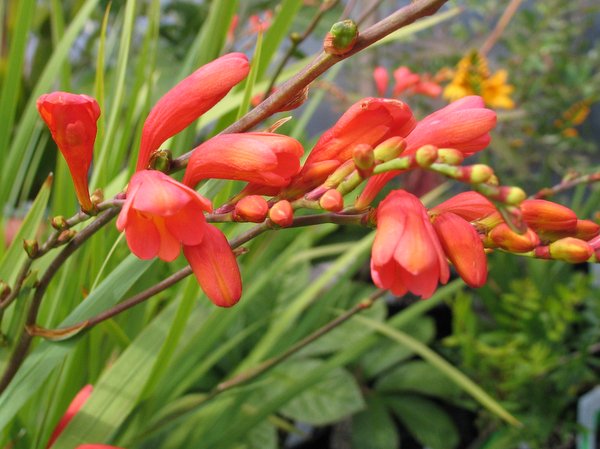
Crocosmia Potts bushes are quite tall - up to 100 cm
Crocosmia Massonorum
A perennial species of Crocosmia Masoniorum is represented by medium-sized bushes 60–80 cm high. It produces dense and narrow leaves (up to 4 cm wide) and small flowers of a rich orange color, which are collected in a brush. It begins to bloom in early July.
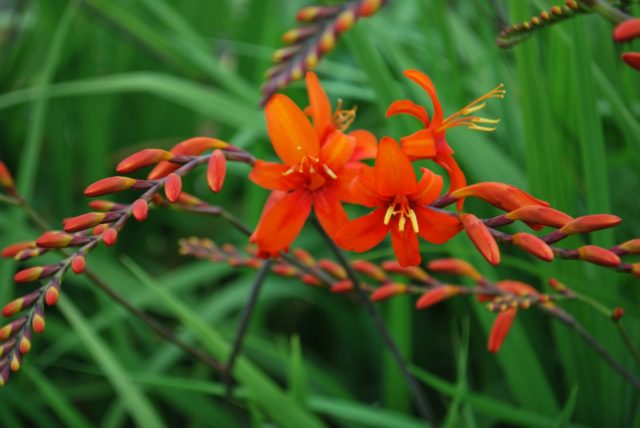
The Massonorum species is frost-resistant, therefore it can winter outdoors in the middle zone and in the south.
The best varieties of crocosmia
Among the best varieties of perennial crocosmia, which have managed to gain popularity among professional and novice florists, are: Norwich Canary, Lucifer, Red King, etc.
Norwich canary
A plant with graceful six-petaled flowers (star-shaped), yellow in color. It blooms in July, August, September and even early October if the autumn is warm enough.
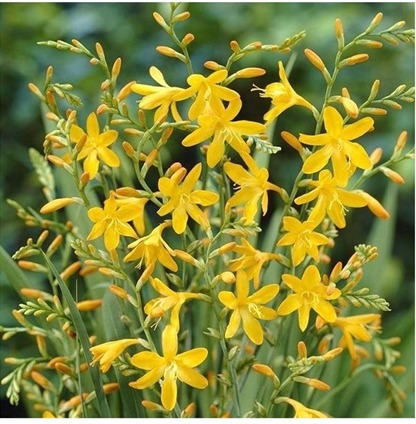
The height of the Norwich Canary bush is about 60-80 cm
Flowers of a delicate yellow color create a very pleasant background.
Crocosmia Lucifer
Crocosmia Lucifer is one of the most popular varieties. It is valued for its large, star-shaped flowers, painted in bright red. The bushes are tall - about 130-160 cm.
Crocosmia flowers Lucifer (pictured) look very impressive, so it is better to plant the plant in the most conspicuous place in the flower garden.
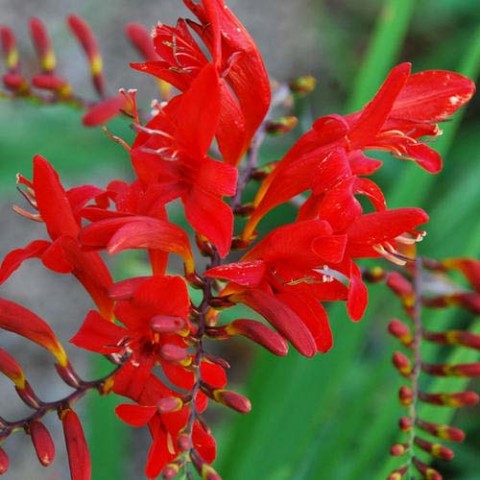
Lucifer's bright red flowers go well with rich green leaves
Emily mckenzie
An interesting variety with drooping peduncles and yellow flowers. In appearance, they resemble a large feather of a firebird. At the same time, the bush is medium-sized - 50-60 cm, so it looks good with both small and large ornamental plants.
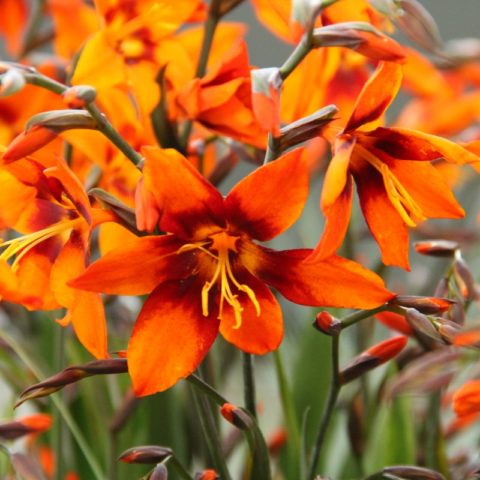
Emily McKenzie is distinguished by its large, intensely colored flowers.
Star of the East
A heat-loving perennial culture that takes root well in the southern regions of Russia. Gives large flowers of an interesting orange color with shades of apricot.
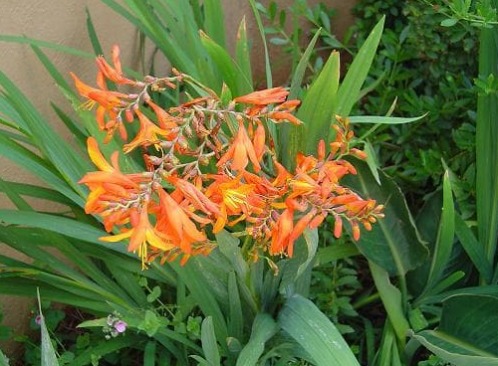
Star of the East - one of the most original varieties of perennial crocosmia
Crocosmia George Davidson
Differs in large flowers (up to 8 cm in diameter). The height of the bushes is 70–100 cm. Flowering is continuous for 8–10 weeks. Winter hardiness is average, so in most regions it is necessary to send it indoors for wintering.
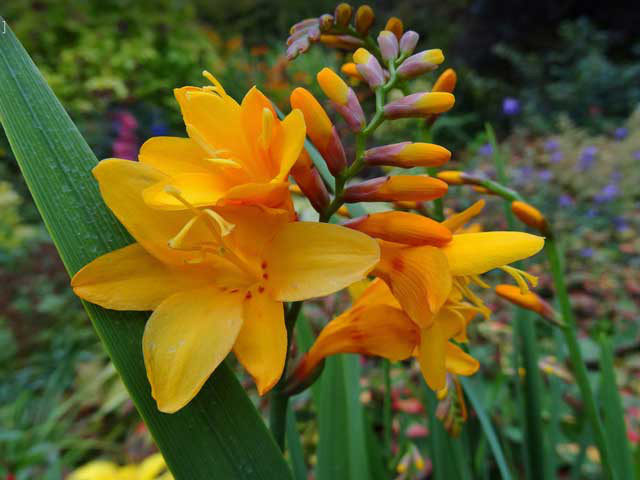
George Davidson is prized for its large flowers and attractive coloration.
Crocosmia Red King
Perennial crocosmia Red King is the brightest representative. The flowers are fiery red, the middle is orange. The plant reaches a height of 40 cm to 1 m, depending on climatic conditions and characteristics of care.

The flowers of the perennial crocosmia Red King are very bright in color, so this variety is planted in the center of the garden.
Application in landscape design
The plant is great for single plantings, next to the recreation area, along the fence, on the coast of the reservoir. It forms dense thickets that look great against the backdrop of a well-groomed lawn. Also, the flower is in harmony with low-growing plants, creating a beautiful background for them.
Variants of using crocosmia in garden design:
- Single landing.
- Composition of perennial crocosmia with ornamental plants.
- Mini-flower bed next to the house.
- Overgrown next to the fence.
- As a tapeworm.
Reproduction methods
Long-term crocosmia is bred:
- vegetatively (by dividing the bulbs);
- seeds.
In the first case, children (up to 4–5 divisions) are separated from an adult bulb, which are planted in open ground and receive flowers for the next season. Moreover, the parent corm will give new babies in a year, so this method of reproduction is very effective. The procedure starts at the end of spring. The instruction is as follows:
- Dig up the parent bush.
- 4–5 children are carefully torn off by hands from each bulb of perennial crocosmia.
- They are planted in pots in which they will grow 1–1.5 months before the beginning of summer (this is especially important for the Urals, Siberia and the Far East).
- Place containers on the windowsill and provide moderate watering.
- Then the bulbs with sprouts are returned to the open ground and planted in the same way as adult plants.
It is also possible to grow crocosmia from seeds - in this case, care will be a little more difficult. The material is sown for seedlings at the end of February. Therefore, preparation should begin at the beginning of the month. The soil is purchased in a store or made independently from turf, peat, humus and sand (2: 1: 1: 1). The soil is disinfected in a weak solution of potassium permanganate or hydrogen peroxide.
You can take any containers - both common boxes and individual pots or cassettes are suitable (this will help to avoid picking). The seeds of perennial crocosmia are soaked in water for a day (it is advisable to replace it 3 times during this time), planted to a depth of 1–2 cm, and the containers are covered with foil. They are placed in a warm place (22-25 ° C), the lighting is monitored. With a lack of sunlight, they illuminate with a phytolamp.
All this time, the regime of regular watering is observed. The soil should remain slightly damp at the surface. At the same time, moisture stagnation should not be allowed. A week after transplanting, you can give a complex mineral fertilizer.

After the appearance of 1-2 leaves, seedlings of perennial crocosmia must be dived
Planting and caring for crocosmia
Proper planting and caring for perennial crocosmia ensures the appearance of beautiful and lush flowers (pictured).
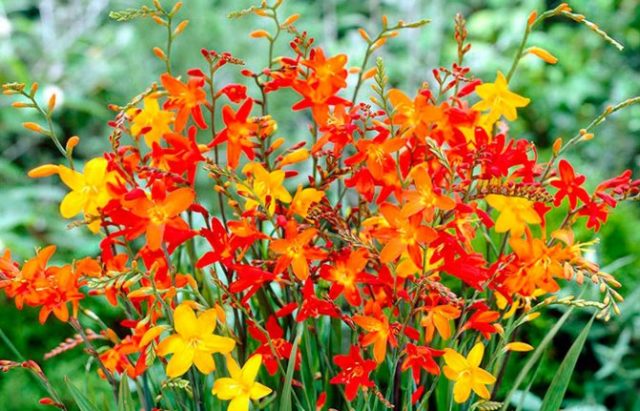
It is not difficult to achieve lush flowering of perennial crocosmia
When growing a crop, it is important to follow the basic rules of care: water regularly and periodically apply top dressing.
When to plant
The term for planting bulbs or seedlings of perennial crocosmia is the end of April or the first half of May. By this time, the soil warms up to 8–10 ° C, which is easy to measure with a street thermometer buried in the hole for 15 minutes. If, according to the forecast, return frosts are still possible, the dates are shifted by 1–2 weeks, but not later.
Site selection and preparation
Perennial crocosmia feels good only in open, well-lit areas, where even a small shadow is absent. It is in such conditions that the plant produces beautiful flowers. The soil should be moderately fertile, light (sandy loam or loamy), not too wet. Lowlands, wetlands, places with a close occurrence of groundwater should not be chosen.
It is advisable to prepare a flower bed for planting crocosmia on the eve of autumn. To do this, the site is cleaned, dug up to 30-40 cm and fertilized with humus - 5-7 kg per 1 m2... If the soil is heavy, clayey, sand or sawdust should be covered at 500-800 g per 1 m2... If the soil is acidified, add 100 g of slaked lime or 200 g of crushed eggshell to the same area. If you add 30 g of urea or nitrate per square meter next spring, then crocosmia will quickly begin to form bushes.
Planting rules for perennial crocosmia
Before planting long-term crocosmia, the surface of the flower bed is leveled, large clods are broken. Then several rows are marked at a distance of 10 cm. Then the bulbs or seedlings are planted to a depth of 10 cm, leaving a distance of 25–30 cm between them. A less dense planting is undesirable, since in this case the composition does not look so impressive.
The holes are watered and mulched with peat, hay, sawdust or other material. The protective layer retains moisture, protects plants from temperature extremes and weeds. It is worth considering that even if all the conditions for planting and leaving are met, crocosmia flowers (pictured) will appear only after 3 years. But after that they will decorate the garden every season.
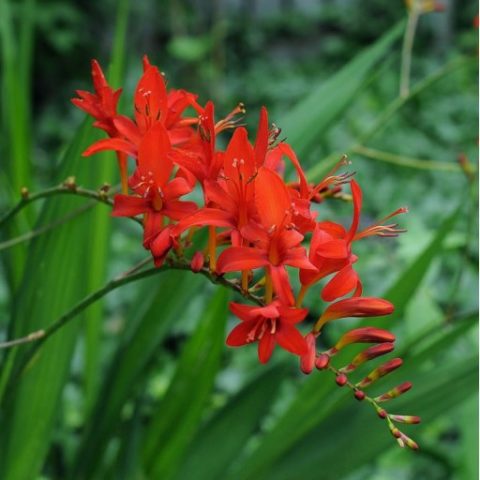
Crocosmia requires careful maintenance, thanks to which you can grow one of the most beautiful crops in your garden.
Watering and feeding schedule
Gardeners should be prepared for the fact that caring for all types and varieties of perennial crocosmia is quite difficult (as well as for their related gladioli). Basic Rules:
- Water the plant every week (if there is no rain or too little rain). The water is preliminarily defended for a day at room temperature.
- After 1-2 days after watering, the soil is thoroughly loosened. It is unacceptable that a dense crust forms on it or the earth cracks.
- Top dressing is actively applied at the first stage of growth. Seedlings after picking are given complex fertilizer. If grown from bulbs, then after the appearance of the first leaves, it is necessary to give an infusion of droppings or mullein. A similar composition is introduced weekly during the first month (only 3-4 times). The next dressing is given at the time of the appearance of the buds.

In the fall, you do not need to apply complex fertilizers, since the nitrogen contained in them will prevent the plant from entering a dormant state.
Preparing for winter
Features of preparation for winter depend on the specific type or variety of perennial crocosmia. In the Urals, Siberia and in the northern regions, plants are dug up in any case. This must be done no earlier than mid-October in order to wait for the final ripening of the children.
2 weeks before digging, crocosmia is stopped to water, the soil is allowed to dry, the leaves and peduncles are completely removed. The bulbs are cleaned of soil and dried well indoors. They are placed in a dark room with a temperature of + 8-10 ° C and stored that way until planting next spring. Periodically moisten from a spray bottle, not allowing it to dry out.
In the regions of the middle zone, the Black Earth Region and the south, corms of perennial crocosmia can be left in the soil. In this case, only the peduncles are removed, and the leaves can be cut off under a stump, which will ensure the growth of new shoots for the next season. Plants must be covered with a large layer of leaf litter (20-25 cm) and covered with foil. In the spring, the shelter is dismantled so that the bulbs do not overreach. It should be borne in mind that crocosmia does not tolerate excess moisture. Therefore, if it grows in a lowland, it is better to dig up the tubers and send them indoors for the winter.
Pests and diseases
Planting and caring for crocosmia Lucifer and other varieties necessarily includes the prevention of diseases and pests, which often affect both the outer part of the plant and the corms:
- fusarium - massive yellowing of leaves, their drying and falling off, deformation of the stems, loss of natural color by flowers;
- gray rot - the appearance of gray spots with small dents due to excess moisture; bulbs are particularly affected;
- jaundice (also grassiness) - the tips of the leaves turn yellow, the leaves acquire an unpleasant straw shade, which leads to the rapid death of long-term crocosmia;
- cicadas - by themselves are not dangerous, but they tolerate jaundice;
- Bears - feed on roots, stems and corms. They can provoke the development of rot. They prefer to live in moist soil, therefore, they are especially dangerous for crocosmia, which loves regular watering;
- thrips - can parasitize on tubers left for storage, as well as after planting;
- spider mite - parasitizes on the green part of the plant, covers it with a layer of whitish cobweb.
The main preventive measure is compliance with moderate watering. The gardener needs to keep an eye on the rain, giving abundant water only in drought. The soil must have time to dry out: the surface can only remain slightly damp.
Terms and rules for collecting seeds
After flowering (in September), perennial crocosmia produces fruits - these are round-shaped bolls with numerous large brown seeds. They begin to be harvested after the fruits are completely dry.
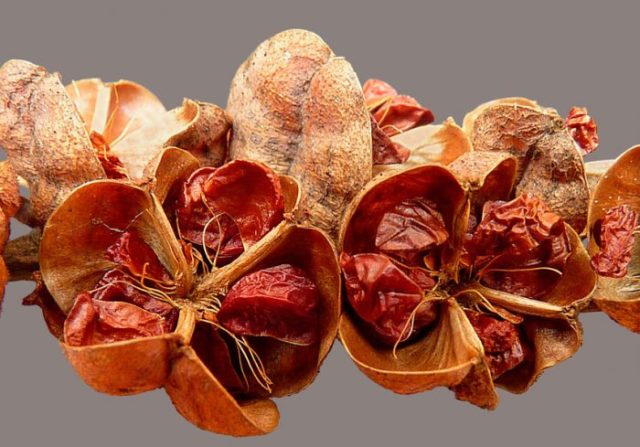
The boxes are carefully removed from the shoots, the seeds are taken out and stored at normal room temperature.
Self-collection and harvesting of seed material is impractical, since a new plant grown in this way does not always retain the characteristics of maternal crocosmia. Therefore, it is recommended to purchase seeds in stores or simply propagate the flower vegetatively, with the help of children appearing around an adult corm.
Conclusion
Planting and caring for perennial crocosmia has certain requirements, but they are all doable. If you regularly water and feed the plant, as well as loosen the soil, then the flowering will be really lush and abundant. It is easier to propagate crocosmia with corms. It should be remembered that the first inflorescences will appear only after 3 years.

